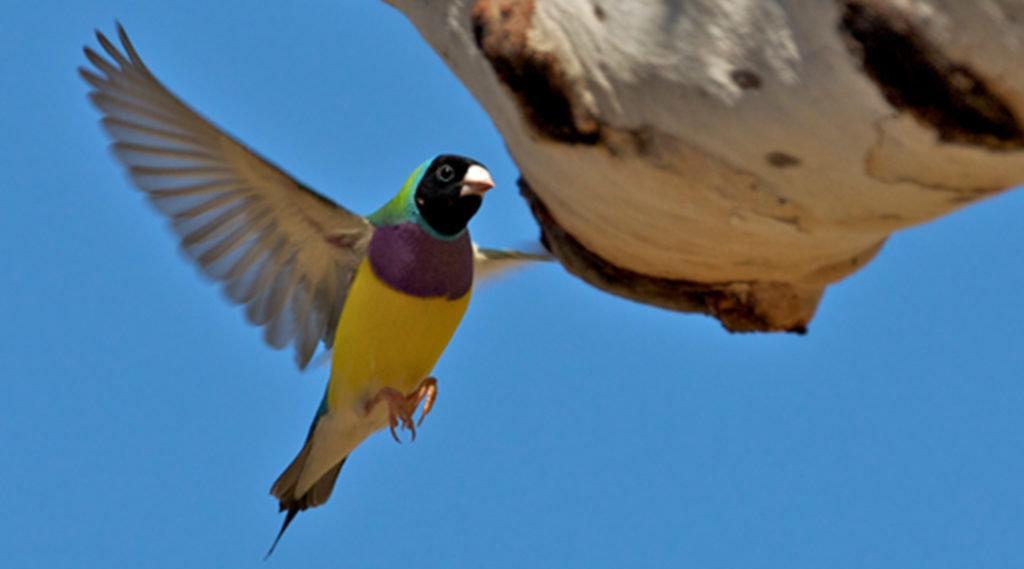ABOUT THE SPECIES
The Gouldian Finch is a spectacularly colourful finch named by John Gould in honour of his wife. Once found commonly across northern Australia, the Gouldian declined dramatically from the 1970s until being declared Endangered in 2006. Initially trapping for aviculture removed many birds, but trapping stopped in the early 1980s and research has shown that the main threatening process is inappropriate fire regimes during the northern dry season which change the availability of key food resources and reduce nesting sites. Gouldians are the only finch which nest only in tree hollows of certain tree species. Every hot late dry season removes a small % of the old trees with suitable hollows. Juvenile Gouldians suffer huge mortality in the transition from dry season to wet season due to shortages of food. Fires in the tropical savannas are now much more extensive, regular and more damaging than the mosaic patch burning which occurs naturally.
ABOUT THE ORGANISATION
Save the Gouldian Fund is a charity which supports University based research and on-ground actions through volunteers all aimed at helping populations of the Gouldian Finch recover. STGF supported a research group at ANU lead by Dr Sarah Pryke which conducted research on the population dynamics, breeding biology and threatening processes impacting the finch in the Kimberley region. Sarah’s team demonstrated the impacts of fire and how we might help. We currently support Charles Darwin University in research on movement of Gouldians. STGF has installed over 2000 artificial nestboxes in the field around Wyndham, which has dramatically improved breeding success. We also conduct an annual count of birds in this region using volunteers. Our ambition is to extend these activities elsewhere in northern Australia. Better management of fire is an ultimate goal, but this is challenging to achieve across the large areas of tropical savannas managed by many different landholders.

